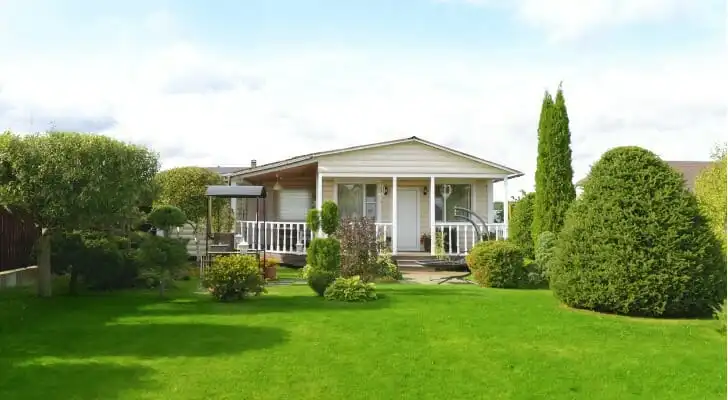A transfer on death (TOD) deed lets a property owner name a beneficiary to receive real estate automatically upon their death, without going through probate. Also known as a beneficiary deed, it’s available in many states and does not alter ownership while the owner is living. The owner can sell the property, change beneficiaries, or cancel the deed at any point during their lifetime. When permitted by state law, this option can streamline how real estate is passed to heirs.
Consider working with a financial advisor as you plan how your estate will be distributed upon your death.
What Is a Transfer on Death (TOD) Deed?
TOD deeds are legal documents that can be filed in local land records offices, and do not require the notice of the beneficiary, though it’s probably a good idea to give them a heads up. Each state that offers TOD deeds has its own requirements as to what the deed entails.
These deeds are revocable once filed. Beneficiaries have no ownership claim to your property while you’re still alive. You maintain full control of the property, including responsibility for any mortgage debt, taxes, liens and the like. Once you pass away, the property will transfer to your named beneficiary, along with any debts attached to it.
A TOD deed includes much of the same information that can be found on typical real estate deeds, including:
- The owner’s name
- The property’s address
- A detailed description of the property
It will also name the person you want to take possession of your property when you pass away, as well as include a statement indicating that you retain possession until your death.
How Transfer on Death Deeds Work

A transfer on death deed is quite simple: you just name the person (or persons) who you want to inherit your property after you pass away. Once this document is signed and filed with your local land records office, it is considered valid until replaced or revoked. In the meantime, nothing else changes: You continue to own your home, make applicable mortgage payments, pay property taxes, make repairs and the like.
You can even sell, refinance, rent out or mortgage the property, if you so choose. The TOD deed does not give your beneficiary any control over or claim to your property while you’re still living.
When you die, ownership of the property will pass automatically and immediately to your beneficiary, along with any mortgage balance, liens or judgments on the property. It does not need to pass through probate, and it is not considered a gift (so gift taxes don’t apply).
In order to claim the property, your beneficiary will likely need to provide a death certificate. Depending on your state, they may also need a sworn affidavit. The requirements of this affidavit will vary from one state to the next, so he or she will need to consider the laws of the state in which the property is located.
Who’s Eligible for a Transfer on Death Deed?
Transfer on death deeds are not available in every state. Eligibility also depends on the state where the property is located, not where the owner or beneficiary resides.
TOD deeds are offered in 32 states (and Washington D.C.).
| States Where TOD Deeds Are Legal |
| Alaska, Arizona, Arkansas, California, Colorado, District of Columbia, Georgia, Hawaii, Illinois, Indiana, Kansas, Maine, Minnesota, Mississippi, Missouri, Montana, Nebraska, Nevada, New Hampshire, New Mexico, New York, North Dakota, Ohio, Oklahoma, Oregon, South Dakota, Texas, Utah, Virginia, Washington, West Virginia, Wisconsin, Wyoming |
Pros and Cons of a Transfer on Death Deed
Before signing a transfer on death deed, there are a few things to keep in mind.
Pros
- You retain ownership while you’re still alive. Your beneficiary only takes over once you pass away; until then, you make all decisions about your property, and can even sell it if you choose. This makes a TOD deed a better choice than, say, adding someone as a joint owner on your property. (In that case, you would need their permission before selling, refinancing, mortgaging or even improving the home.)
- It is revocable. If you choose to withdraw or revoke your transfer on death deed, you can do so at any time. You can also replace an existing TOD deed with a new one, if desired.
- It’s simple. Establishing a transfer on death deed is easy. It just requires signing the document and filing with your county land records office. You don’t even need to let the beneficiary know you’ve done it.
- Anyone can be named your beneficiary. You can use a transfer on death deed to pass property to anyone when you die. This includes family members, friends, other loved ones or even charitable causes.
Cons
- Joint ownership takes precedence. If the property is jointly owned with someone else, that ownership supersedes a TOD deed. The property will instead transfer to the other owner if you pass away. Once they also pass away, the TOD deed will go into effect (if still valid).
- If your beneficiary dies first, your property goes to probate anyway. If you pass away along with or after your beneficiary, and don’t have a backup beneficiary named, your property will go through probate with the rest of your estate.
Bottom Line

A TOD deed can be used to transfer real estate property to others after you pass away. Because a TOD deed bypasses probate, it can simplify the inheritance process and reduce costs for your loved ones. While a TOD deed doesn’t fall under the gift tax umbrella, there are still estate tax implications to consider and the property can be subject to inheritance taxes. If you do not already have a trust established, however, and want to avoid your property moving through probate after you pass away, consider whether a TOD deed could be the right choice.
Estate Planning Tips
- You don’t need to “go-it-alone” when it comes to estate planning. While an estate planning attorney is often your primary guide through this process, a financial advisor can also help you structure your finances with the next generation of your family in mind. SmartAsset’s free tool matches you with vetted financial advisors who serve your area, and you can have a free introductory call with your advisor matches to decide which one you feel is right for you. If you’re ready to find an advisor who can help you achieve your financial goals, get started now.
- Understand how federal and state estate taxes could affect your heirs. In 2025, the federal lifetime gift and estate tax exemption is $13.99 million per person, but this limit will jump to $15 million in 2026. You can also give up to $19,000 per year per recipient tax-free to reduce the size of your taxable estate over time.
Photo credit: ©iStock.com/elenaleonova, ©iStock.com/designer491, ©iStock.com/RichLegg
